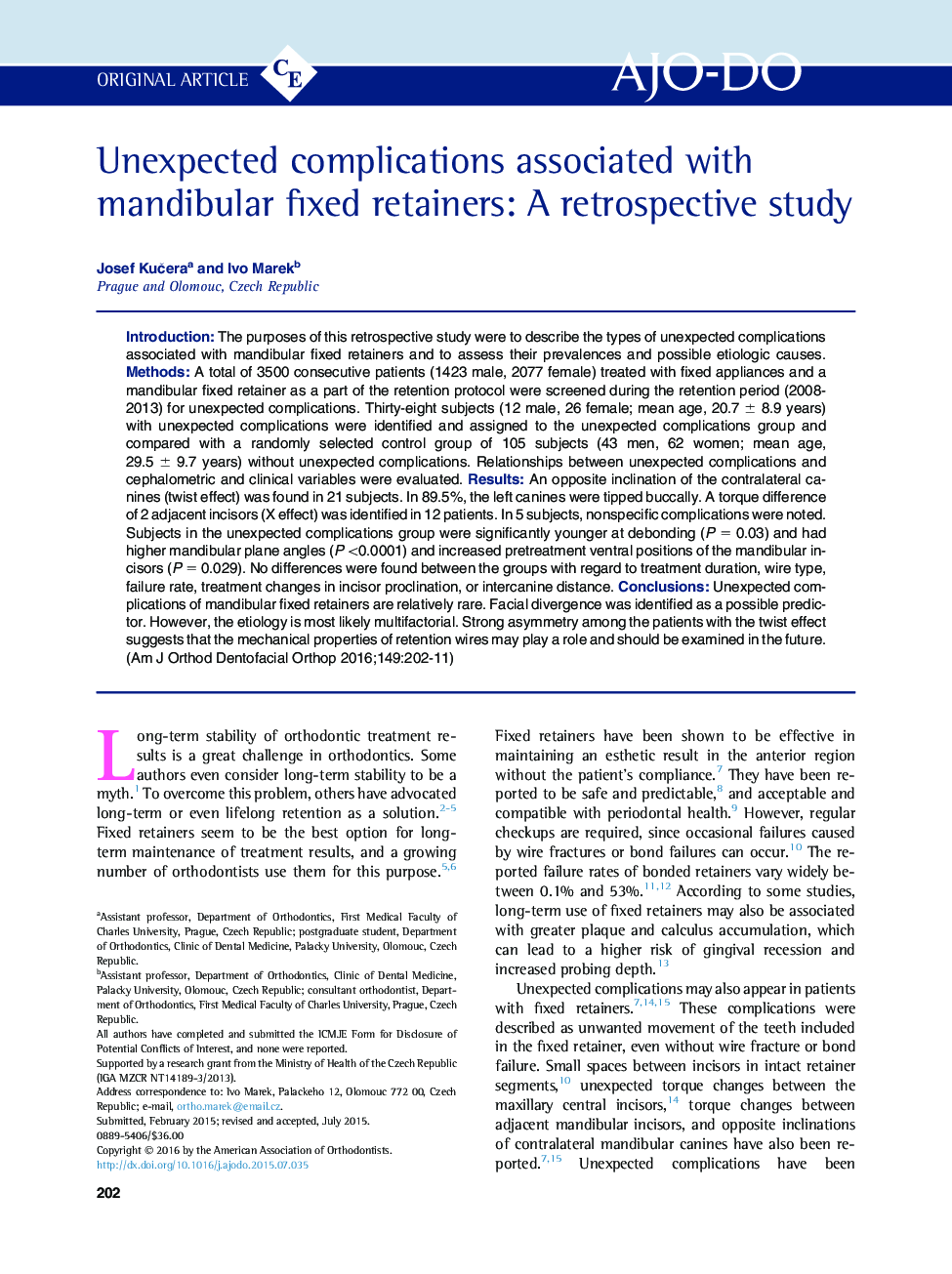| Article ID | Journal | Published Year | Pages | File Type |
|---|---|---|---|---|
| 3115719 | American Journal of Orthodontics and Dentofacial Orthopedics | 2016 | 10 Pages |
•Prevalence and etiologic factors of unexpected complications of mandibular bonded retainers were examined.•Three forms of unexpected complications were identified, but prevalence was low (1.1%).•Strong asymmetry was found for canine inclination in the unexpected complications group.•Patients with unexpected complications were compared with a control group without complications.•Distribution of gingival biotypes was significantly different between the groups.
IntroductionThe purposes of this retrospective study were to describe the types of unexpected complications associated with mandibular fixed retainers and to assess their prevalences and possible etiologic causes.MethodsA total of 3500 consecutive patients (1423 male, 2077 female) treated with fixed appliances and a mandibular fixed retainer as a part of the retention protocol were screened during the retention period (2008-2013) for unexpected complications. Thirty-eight subjects (12 male, 26 female; mean age, 20.7 ± 8.9 years) with unexpected complications were identified and assigned to the unexpected complications group and compared with a randomly selected control group of 105 subjects (43 men, 62 women; mean age, 29.5 ± 9.7 years) without unexpected complications. Relationships between unexpected complications and cephalometric and clinical variables were evaluated.ResultsAn opposite inclination of the contralateral canines (twist effect) was found in 21 subjects. In 89.5%, the left canines were tipped buccally. A torque difference of 2 adjacent incisors (X effect) was identified in 12 patients. In 5 subjects, nonspecific complications were noted. Subjects in the unexpected complications group were significantly younger at debonding (P = 0.03) and had higher mandibular plane angles (P <0.0001) and increased pretreatment ventral positions of the mandibular incisors (P = 0.029). No differences were found between the groups with regard to treatment duration, wire type, failure rate, treatment changes in incisor proclination, or intercanine distance.ConclusionsUnexpected complications of mandibular fixed retainers are relatively rare. Facial divergence was identified as a possible predictor. However, the etiology is most likely multifactorial. Strong asymmetry among the patients with the twist effect suggests that the mechanical properties of retention wires may play a role and should be examined in the future.
